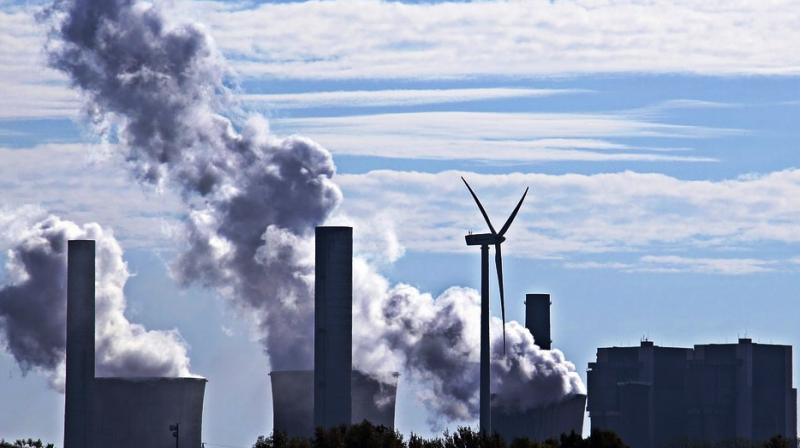Pollution control policies fail to improve air quality in India

Washington: A recent study has found that more than 674 million Indian citizens are likely to breathe air with high concentrations of PM2.5 in 2030, even if India were to comply with its existing pollution control policies and regulations.
The study was released by the International Institute for Applied Systems Analysis (IIASA) and the Council on Energy, Environment, and Water (CEEW).
The study shows that only about 833 million citizens would be living in areas that meet India's National Ambient Air Quality Standards (NAAQS) in 2030 and that implementation failure could increase these numbers significantly.
However, aligning sustainable development policies to the implementation of advanced emission control technologies could provide NAAQS-compliant air quality to about 85 per cent of the Indian population.
In 2015, more than half of the Indian population, about 670 million citizens were exposed to PM2.5 concentrations that did not comply with India's NAAQS for PM2.5 (40 μg/m³). Further, less than 1 per cent enjoyed air quality that met the World Health Organisation (WHO) benchmark limit of 10 μg/m³.
"A significant share of emissions still originates from sources associated with poverty and underdevelopment such as solid fuel use in households and waste management practices," explained Markus Amann, Air Quality and Greenhouse Gases Program director, IIASA.
In January 2019, the Indian government launched the National Clean Air Program (NCAP), a five-year action plan to curb air pollution, build a pan-India air quality monitoring network, and improve citizen awareness. The program focuses on 102 polluted Indian cities and aims to reduce PM2.5 levels by 20-30 per cent over the next five years.
The analysis conducted by researchers from IIASA and CEEW, however, suggests that NCAP needs to be backed by a legal mandate to ensure successful ground-level implementation of emission control measures. In the long-term, NCAP also needs to be scaled-up significantly to ensure that rapid economic growth and meeting NAAQs are aligned.
Pallav Purohit, an IIASA researcher and lead author of the study said, "While current ambient PM2.5 monitoring in India reveals high levels in urban areas, remote sensing, comprehensive air quality modelling, and emission inventories, suggest large-scale exceedances of the NAAQS, also in rural areas.
“Pollution from rural areas is transported into the cities (and vice versa), where it constitutes a significant share of pollution making the coordination of urban-rural and inter-state responses critical,” Purohit added.
Hem Dholakia, a senior research associate at the CEEW, and one of the authors of the study added, "The health burden of air pollution is significant in India. Limited control of air pollution will aggravate this burden in the future."
“The IIASA-CEEW study clearly shows that the policy choices of today will impact future air quality and its aftermaths. The central and state governments must do more to align air quality, climate change, and sustainable development goals in a resource efficient manner,” Dholakia said.

